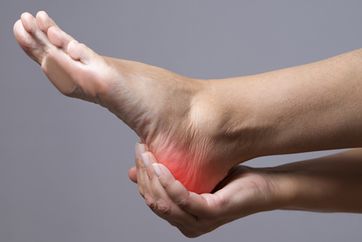Diabetic foot ulcer outcomes improve with better access, more comprehensive care
Fewer first-time diabetic foot ulcers were reported from 2013 to 2017 compared with 2003 to 2007 in a high-risk population that had access to more comprehensive podiatry care services, according to findings published in Diabetic Medicine.
“Persons living with diabetes and loss of protective foot sensation, foot deformity and/or peripheral vascular disease are at high risk of diabetic foot ulceration, and those with previous ulceration are at even greater risk,” Richard B. Paisey, MD, of the Torbay and South Devon Integrated Care Trust in the United Kingdom, and colleagues wrote. “Attempts to reduce new and recurrent ulceration in high-risk persons have required intensive intervention and follow-up.”
Paisey and colleagues identified the number of diabetic foot ulcers, both newly present and recurrent, as well as ulcer healing rate in South Devon, U.K., between 2003 and 2017 using a community database from the Torbay and South Devon Health Care Trust. In addition, clinical examinations revealed the occurrence of diabetic neuropathy and peripheral vascular disease as well as protective foot sensation. There was an increase in the number of podiatry-focused health care professionals in this community, the researchers wrote, and a multidisciplinary foot team began practicing in the area in 2009. Previous work indicated that there were fewer major amputations in this region from 2005 to 2017.

Although the incidence of all ulcers rose from 20.7 per 1,000 person-years in 2003-2007 to 33.1 per 1,000 person-years in 2013-2017 (P = .007), the researchers found that the incidence rate of first-time diabetic foot ulcers decreased from 11.1 per year in 2003-2007 to 6.1 per year in 2013-2017 (P = .0006). In addition, the percentage of those with foot ulcers who also had peripheral vascular disease fell from 19.8% in 2003-2007 to 14.7% in 2013-2017 (P = .0022). The researchers further noted that 5-year survival rates after the incidence of a first-time ulcer were lower for those with peripheral vascular disease compared with those without the condition (P < .0001). In addition, those whose ulcers healed within 2 years had higher 5-year survival rates compared with those whose ulcers did not heal within the same time period (P < .0001).
“Prevention of foot ulceration in those living with diabetes is critically dependent on their own foot care, annual foot review and access to podiatry,” the researchers wrote. “For success, there must be readiness of all health care professionals to offer education when the person is receptive, systematic and enthusiastic care in general practice, and fully staffed community podiatry services.” – by Phil Neuffer
Disclosures: The authors report no relevant financial disclosures.
